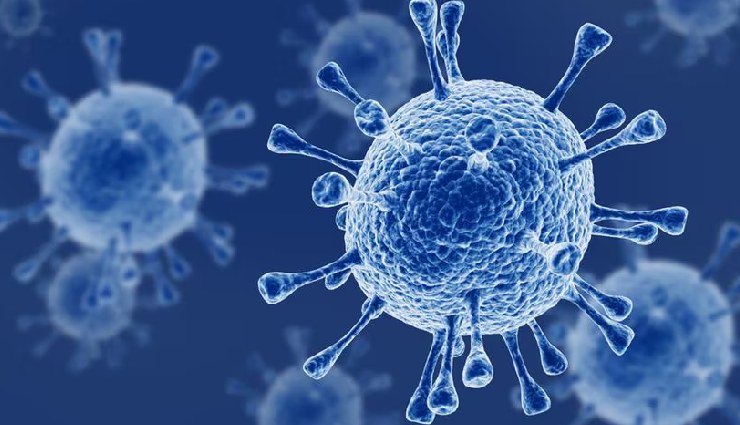- Home›
- Healthy Living›
- HMPV Virus- Causes, Symptoms And Treatment
HMPV Virus- Causes, Symptoms And Treatment
By: Priyanka Maheshwari Tue, 07 Jan 2025 12:57:22

As the world begins to recover from the aftermath of COVID-19, another respiratory virus has quietly reemerged: Human Metapneumovirus (HMPV). Recently, two cases were reported in children in Bengaluru, bringing renewed attention to this lesser-known yet long-standing virus. Often compared to COVID-19 due to its similar modes of transmission and symptoms, HMPV spreads through respiratory droplets, direct contact, and contaminated surfaces.
Common symptoms include fever, cough, and difficulty breathing. While generally less severe than COVID-19, its resurgence during colder months highlights the need for awareness and preparedness.
In the face of this emerging challenge, communities are encouraged to stay vigilant and adopt preventive measures to curb the spread of this overlooked respiratory threat.
Human Metapneumovirus (HMPV) is a respiratory virus that belongs to the family Paramyxoviridae. It was first identified in 2001 and is a common cause of respiratory illnesses in people of all ages, particularly infants, young children, the elderly, and those with weakened immune systems. Here's an overview of the virus:
Causes:
Human Metapneumovirus (HMPV) is a respiratory virus belonging to the Paramyxoviridae family. It is closely related to Respiratory Syncytial Virus (RSV). The virus primarily spreads through:

# Respiratory Droplets:
When an infected person coughs or sneezes.
# Direct Contact:
Touching contaminated surfaces and then touching the face (eyes, nose, or mouth).
# Close Proximity:
Being in crowded spaces increases the risk of transmission.
HMPV infections are more common in late winter and early spring, similar to other respiratory viruses.
Symptoms:
HMPV symptoms range from mild to severe, depending on the age and health status of the infected person. Symptoms typically appear 3–6 days after exposure.
# Mild Symptoms:
Cough
Nasal congestion
Runny nose
Sore throat
Mild fever
# Moderate to Severe Symptoms:
Wheezing
Shortness of breath
High fever
Chest pain or discomfort
Hoarseness
Fatigue
# Severe Complications (in vulnerable groups like infants, elderly, or immunocompromised individuals):
- Bronchiolitis: Inflammation of the small airways in the lungs.
- Pneumonia: Infection of the lungs.
- Respiratory distress: Difficulty breathing requiring medical intervention.
Treatment:
There is no specific antiviral medication for HMPV. Treatment is supportive, focusing on alleviating symptoms and preventing complications:
# Mild Cases:
Rest.
Stay hydrated.
Use over-the-counter medications like acetaminophen or ibuprofen for fever and pain.
- Use saline nasal sprays or humidifiers to ease congestion.
# Severe Cases:
- Hospitalization may be required.
- Oxygen Therapy: To improve oxygen levels in severe respiratory distress.
- Mechanical Ventilation: In critical cases where breathing is compromised.
- Bronchodilators: To ease breathing in individuals with wheezing or asthma-like symptoms.
- Management for High-Risk Groups:
Close monitoring for complications like pneumonia or bronchiolitis.
Antibiotics are NOT effective as HMPV is a viral infection.
Prevention:
While there is no vaccine for HMPV, you can reduce the risk of infection by following these measures:
# Hand Hygiene:
Wash hands frequently with soap and water for at least 20 seconds.
# Avoid Close Contact:
Stay away from sick individuals, especially during outbreaks.
# Disinfect Surfaces:
Clean frequently touched surfaces like doorknobs, phones, and toys.
# Cough Etiquette:
Cover your mouth and nose with a tissue or elbow when sneezing or coughing.
# Stay Home When Sick:
Prevent spreading the virus by staying home during illness.





